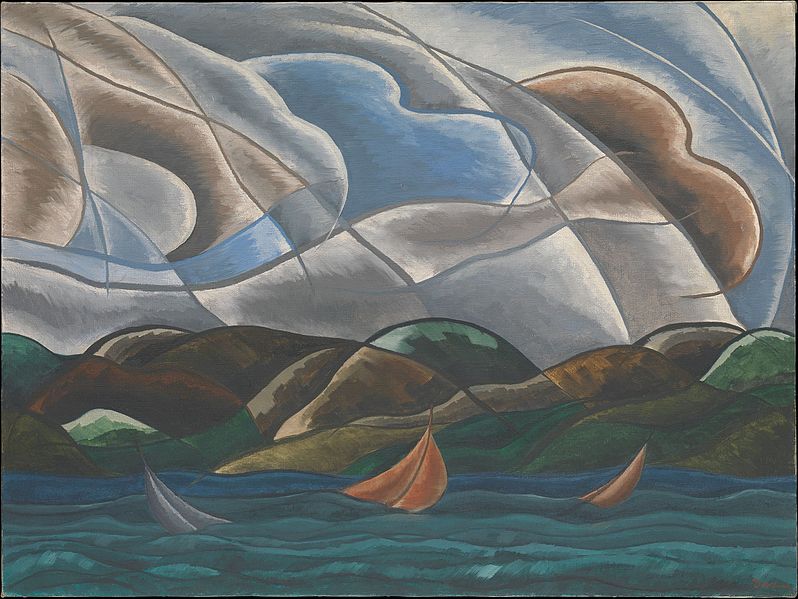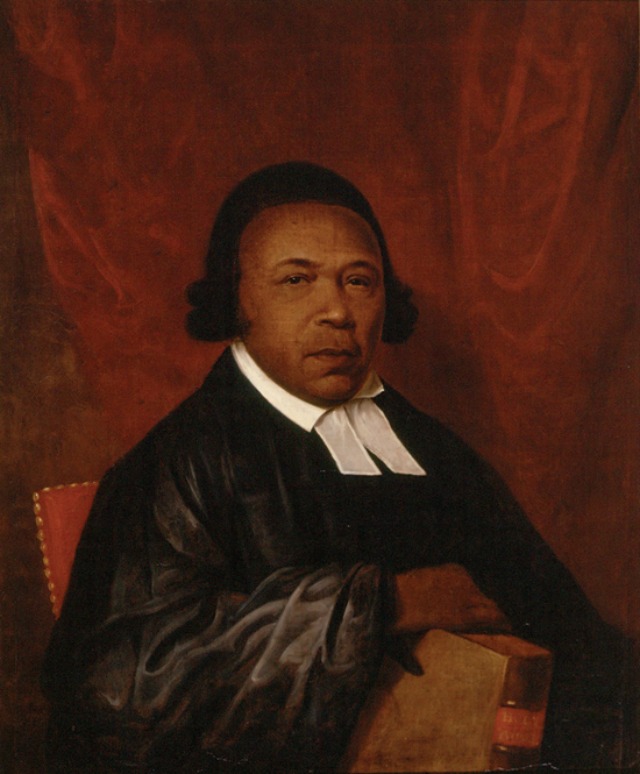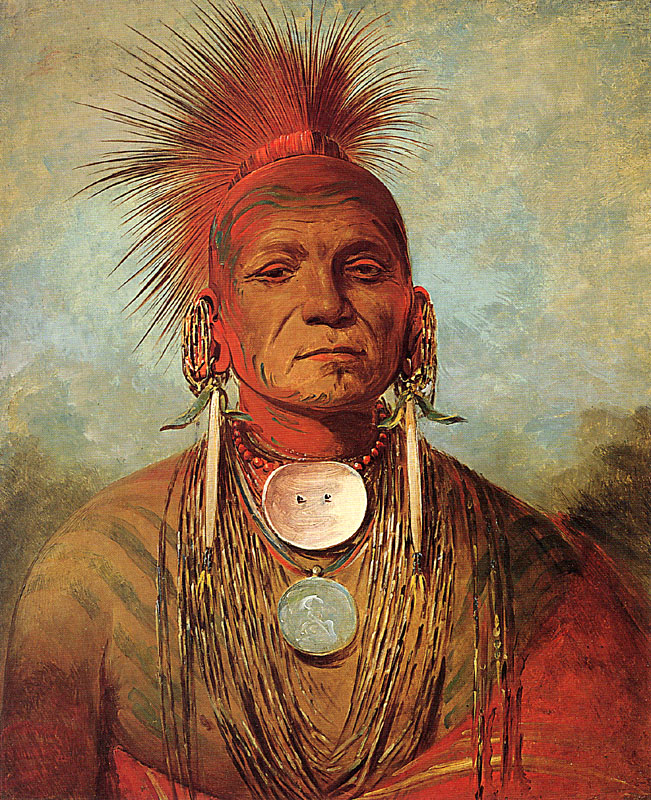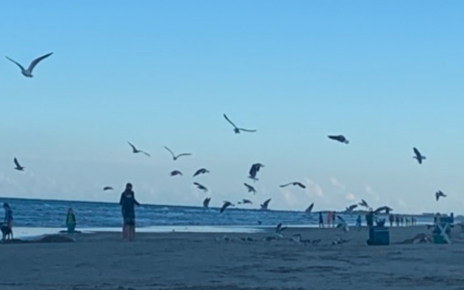The following article will appear next month in the Winter 2021-22 issue of the Journal for Cultural and Religious Theory. It is published in three installments. The first installment can be found here, the second here.
It remains, of course, entirely possible that Wynter was unaware of the link between the demonic and such alternative ontologies although this seems, for reasons explained above, unlikely.[1] If my theory is correct, moreover, we can conclude that implicitly embedded in the notion of “demonic ground” is not merely or only that these “parallel” systems in physics with an unknowable, indeterminate outcome (as McKittrick would have it). Nor does the term, in its original usage, refer primarily to those experiments that institute an active challenge to or disruption of hegemonic natural processes (as Haley’s analysis adds).
Indeed, the notion of “demonic ground” also includes systems that “parallel” that which is perhaps most fundamental to Comfort’s demonic: epistemologies that explicitly push thinking beyond well-worn philosophical and scientific understandings of the relationship between self and other, subject and object. This becomes particularly important when we consider, with scholarship in Black studies, that it was precisely the distinction between subject and object that, embodied and expressed along racial lines, formed a foundation and legitimation for racist violence, oppression, subjugation and exclusion.[2] It is for this reason that the second part of this essay turns to Fred Moten’s “mysticism in the flesh,” which allows me to bring the implicit oceanic traces in “demonic ground” and its insistent critique of the racialized nature of the distinction between subject and object to the surface.
Oceanic Mysticism[3]
Moten began to develop his mysticism in 2013, in his article “Blackness and Nothingness (Mysticism in the Flesh)” in explicit conversation with and critique of Frank Wilderson’s Afro-pessimism. While he never defines mysticism, he seems to arrive there by way of poet Nathaniel Mackey, and his concept of “mu.” “Mu” conveys a multitude of meanings: the state in-between fantasy and reality, or a movement as “wheeling, spiraling runs” without beginning or end.[4] Most important here is his conceptualization of “mu” as denoting the hold of the slave ship. Significantly, however, the “hold of the ship” does not only refer to this specific historical place and event, but also signals a continuing state, temporality, and condition.[5] In Mackey’s work, mu thus signals something in-between, unfinished, unfolding, becoming, a “radical unsettlement.”[6] Moten then links this insight to the apophatic Buddhist philosophy of Nishida Kitarō, more specifically his reflections on “mu,” a term that, Moten writes, has been variously translated as “no, not, nought, nonbeing, emptiness, nothingness, nothing.”[7]
Taken together, Nishida and Mackey allow Moten to develop an alternative to Wilderson’s assertion of the “relative nothingness of blackness and black people.”[8] At the risk of oversimplifying, we might conclude that Afro-pessimism begins and ends its thinking from the standpoint of the political subject, or, the transcendental subject that is knowing and self-possessed). Seen from that standpoint, blackness occupies the relative position of the pathological object, which does not possess itself, that is seen as unknowing). For Afro-pessimism, you therefore have two relative positions, the transcendental subject and the pathological object, who need each other for their survival.
Blackness thus always already exists in, through and as the unified pairing of Human/Slave, White/Black, Civic Life/Social Death. With help of Mackey and Nishida, Moten is after a nothingness that is absolute; for him, blackness is not defined in and through its relationship with white civil society (that is, in and through “sovereignty and relational ontology”[9]) but exists appositionally, outside of the endless desire for categorical distinction. Blackness—which Moten conceives of as force rather than category of identity[10]—names the always already fugitive escape from the white social order that always already tries to impose itself on blackness, capture blackness, imprison blackness.[11] It is unbounded, fluid, becoming. Oceanic, as it were.[12]
Such seemingly abstract theorizations become clearer, and more immediate, when we consider that Moten ties his understanding of “mu,” mysticism and the oceanic quality of blackness to Hortense Spillers’ idea of the flesh: after all, his mysticism is a “mysticism of the flesh.” Spillers famously distinguished the flesh from the body in her 1987 essay “Mama’s Baby, Papa’s Maybe.”[13] In theorizing this distinction, Spillers writes that the African, as cultural subject, was “murdered” on the slave ship, a “theft of the body” that left nothing but the flesh.[14] Understood in this way, the flesh is thus anterior to, or ‘before,’ the body. It exists prior to racialization, violence, and enslavement, yet remains concealed “under the brush of discourse, or the reflexes of iconography.”[15]
This is instructive for another distinction between Moten and Wilderson: where the latter argues that blackness is created through slavery, Moten remains convinced that blackness (again, as force, not identity or position) existed prior. But the flesh, in Spillers’ writings, is also the site of absolute, horrific violence: the “hieroglyphics of the flesh,” the whipping, branding, wounding and scarring of Black flesh, continued to find discursive force in what Saidiya Hartman calls the “afterlife of slavery,” marking Black people, over generations, as “being for the captor.”[16]
And yet, for Spillers, the flesh is also the site for resistance: existing outside the grasp of “Man,” whose persistent efforts to fully capture the flesh in and through order, categorization and differentiation ultimately always, if violently, fail, the flesh is the locale for potentiality. The flesh is an “intruding tale,” the locus for finding new meanings and significations that lie outside of the structures of white, antiblack patriarchal society.[17] In the flesh, Spillers locates the possibility for a kind of sociality that is grounded in yet exceeds suffering and violence of centuries of antiblack white supremacy; a kind of sociality, importantly, that consistently resists the persistent efforts of “Man” to subjugate, oppress, capture.
We find an example of such forms of sociality, Moten theorizes in conversation with Spillers, on slaving vessels.[18] In thinking with Spillers, Moten’s turn to the ocean thus pushes beyond metaphor in that he ties it directly to the very real history of the transatlantic slave trade. In a text co-written with Stefano Harney, he notes:
Never being on the right side of the Atlantic is an unsettled feeling, the feeling of a thing that unsettles with others. It’s a feeling, if you ride with it, that produces a certain distance from the settled, from those who determine themselves in space and time, who locate themselves in a determined history. To have been shipped is to have been moved by others, with others. It is to feel at home with the homeless, at ease with the fugitive, at peace with the pursued, at rest with the ones who consent not to be one.[19]
Moten’s mysticism thus conveys a feeling or state but one that is explicitly affective, material, and intimate: the “hold of the ship” offered “the capacity to feel through others, for others to feel through you, for you to feel them feeling you.”[20] Emerging in and through categorization, through differentiation, through “master code” (to return to Wynter’s term), “Man” is unable to understand, let alone participate in, such feeling. Moten thus turns to mysticism to denote the possibility for a fugitive way of sentiment, existing, experience, feeling, touch, communication, and sensing, outside of the realm of white civil society, sovereignty, political ontology, and the subject. As radical sociality, his mysticism conveys potentiality outside of the political ontology of the coherent human-as-subject, thereby refusing hegemonic “western” ideations of the subject in favour of sociality, an always already togetherness.[21]
Denouncing the bounded subject, Moten’s mysticism is, that much is evident, reminiscent of the experiences that Comfort brings together under the rubric of “oceanic.” And yet, where Comfort’s broad rubric universalized such experiences, I underscore the significance and originality of, and certainly the need for, the specificity of Moten’s project. Moten is not just speaking of any subject—dissolved or not—but is developing his argument about and plea for mysticism in regard to the very precise context of enfleshed Black existence, in the context, that is, of centuries of oppression and objectification that were propelled by and grounded in a very particular understanding of the human: “Man.”
It is this constructed and racialized “human” that Moten both critiques and offers an alternative to. In other words, rather than advocating for the inclusion of Black people in “Man,” Moten’s “mysticism of the flesh”—which, in and through its specific reference to the flesh, lodges mysticism in a particular historical, experiential, and material reality—proposes to leave it behind. To the extent that his challenge to the subject-object distinction echoes that of Comfort then (in that both turn to a form of oceanic mysticism), it takes on a more precise, more immediate, more social meaning that links us right back up with Wynter’s “demonic ground”—and towards “demonic ocean.”
Demonic Ocean
Thus far, this essay has sought to accomplish two things. First, I identified a heretofore unknown source of inspiration for Wynter’s “demonic,” which also showed that to the extent that Wynter borrowed the term from “physicists,” she did so specifically from quantum physics. This becomes particularly relevant when we consider that contemporary Black studies scholarship has also turned to quantum physics to think anew the possibilities of Black social life in the face of continuing manifestations of antiblack white supremacy.[22]
Quantum physics, at least on a theoretical level, purports the existence of radical randomness, non-predictability, non-determination, non-locality and is, precisely for this reason, used to speculate about possibilities for Black existence outside or beyond the overdetermination of Blackness in and through race. Black studies’ interest in Wynter’s “demonic ground” and the turn to quantum physics happened almost simultaneously; it’s fascinating to entertain the possibility that the two were linked already thirty years ago. Locating this source demonstrated too that even if Wynter, as McKittrick notes, did not ground her notion of the demonic in the ecclesial meaning of the work, the term does carry “religious” traces, in the form of so-called “oceanic experiences” that, like quantum physics, demonstrate the limits of Kantian space-time in understanding our “reality.”
Second, and following the link between the oceanic and demonic expressed in Comfort’s work, I turned to Moten’s mysticism of the flesh as an example of an oceanic “demonic model” that parallels those explored by Comfort but, in line with Wynter’s “demonic ground,” is particularly attuned and offers an alternative to Man. This turn to Moten also keyed us into interesting but previously hidden “link” between Wynter’s writings and Black studies scholarship: as Tiffany Lethabo King also notes (and, indeed, critiques) many scholars in Black studies have turned to the ocean and other “watery metaphors” to theorize blackness.[23] In addition to Moten, we may emphasize here the work of the two other scholars discussed above, Spillers and Wilderson.
Building on these two sections, this final section coins the concept of “demonic ocean.” Seemingly paradoxically, this concept reconfigures the dominant relationship between the oceanic and demonology as espoused in Christian theological discourse, where the “primordial chaos” of the ocean is—often in and through its embodiment in Leviathan—seen as demonic.[24] If Wynter, drawing from physics, reclaimed the “demonic” from its (racialized) theological association with evil, the concept of “demonic ocean” brings those writings in conversation with Black studies to reclaim the ocean itself from demonization.
The shift from “ground” to “ocean” is more than semantic. For all its epistemological usefulness, the term “ground” remains undeniably wedded to land, soil, territory. I have come to wonder if Wynter’s commitment to “ground” could be indebted to the profoundly land-based orientation that, until recently largely undetected, grounds virtually all our ways of knowing, thinking, imagining.[25] As a decade of scholarship in the blue humanities has demonstrated, we’ve had, to use Dan Brayton’s apt phrase, “our backs toward the sea.”[26] The recent shift from green to blue, from surface to what lies below, from nation state to transnational crossings and dwellings has revealed, however, that the ocean constitutes a materiality and phenomenological experience that is different from that which is encountered on land.[27] On land, there exists the opportunity to ground oneself in relation to a fixed point; the ocean, in contrast, is unfixed, fluid, mobile.
But where Steinberg, Peters, and others configure the open sea in a general way, such different phenomenology creates an immediate problem for those who were enslaved and their descendants. Moten depicts this in a devastating way in “Blackness and Nothingness.” “It’s terrible,” he writes, “to have come from nothing but the sea, which is nowhere, navigable only in its constant autodislocation.”[28] Immediately afterwards, however, Moten identifies this fundamental liquidity as the starting point for thinking, writing, imagining Black social life: the “absence of solidity seems to demand some other ceremony of hailing that will have been carried out on some more exalted frequency.”[29] In Moten’s mysticism, the oceanic—precisely because of its fluid, indeterminate nature—forms the vantage point to think and be anew.
More recently, scholars such as Jonathan Howard and Joshua Bennett have explicitly turned to black literature and poetry situated in the oceanic environment of the Middle Passage to provoke epistemological interventions and alternatives to “Man.”[30] Of course, Édouard Glissant and Derek Walcott already wrote about and theorized with the ocean decades ago. Glissant, to invoke just one example, linked his conceptualization of the rhizome to the entangled possibility of the ocean by way of the mangrove while Walcott’s most famous poem, “The Sea is History,” reflected on the transformative nature of salty water.
Indeed, not denying the reality of the recent influx in the “west” of conferences, books, special journal issues and book series pertaining the so-called blue humanities we find, as Elizabeth DeLoughrey also writes (2017), a longer, consistent and extended concern with the oceanic in Afrodiasporic writings. Such a concern also warrants that we approach the “oceanic turn” with a bit of caution: as Alice Te Punga Somerville reminds us, the term “turn” suggests a renewed interest while some peoples—Somerville writes specifically of the Pacific—“have not needed a ‘turn to the sea’ because [they] were already there.”[31]
The writings of Bennett, Howard, Glissant and others form the foundation for my notion of “demonic ocean.”[32] Specifically, “demonic ocean” makes explicit the implicit traces of the oceanic that we find in “demonic ground” and denotes the various ways in which Black intellectual, religious, and cultural production has turned to the ocean as material, physical entity[33] in order to critique and offer an alternative to Man. In the past two decades alone, such Afrodiasporic oceanic alternatives were expressed, for instance, in the films of The Ololith Group, the artworks of Ellen Gallagher, Kara Walker, Christopher Cozier and Maria Magdalena Campus-Pons, the writings of M. NourbeSe Philip, Fred D’Aguiar, Xandria Philips, and Alexis Pauline Gumbs and, finally, the music of Drexciya. I discuss many of these artists, writers and intellectuals in a current book project, tentatively titled Demonic Ocean: Parareligion in the African Diaspora (based on my dissertation).
There, I work from Wynter’s aforementioned conceptualization of the “phenomenon of religion” to establish and develop my theory of parareligion and name these works parareligious stories, a nomenclature that seeks to denote the ways in which these inhabit and then critique the categorical distinctions that ground, produce and reinforce antiblack white supremacy—including, of course, the distinction between subject and object that Comfort also takes issue with, if for different reasons.[34] After all, the “Western scientific ontology” that, beginning with Descartes, assumed a hegemonic status does not only, as Comfort laments, limit the possibilities for thought: it also legitimates the continued subjugation of Black people through its attempts to capture, contain and categorize the generative possibilities of flesh, of blackness.
In all these works, moreover, the oceanic takes on difficult, complicated meaning as at once the last resting place of hundreds of thousands of enslaved Africans that were forced to undertake the journey from Africa to the Americas and as a place of refuge, “however remote or submerged,” as Bennett notes, where “black life can flourish.”[35] Bennett’s claim is important: in works like these, the oceanic environment of the Middle Passage becomes a place of utopian potential, a shift that also highlights that such works are, to the extent that they imagine new forms of life, often future-oriented. Their work exemplifies the position of the unthought, certainly, but also identifies the ocean as a locale of profound epistemological critique—a demonic ocean, “far away,” to return one last time to the quote of Weheliye that served as my epigraph, “from the continent of man.”
Justine M. Bakker is Assistant Professor of Comparative Religious Studies at Radboud University in Nijmegen, The Netherlands, and a postdoctoral researcher at KU Leuven (Belgium). Her published work focuses on the intersections of race and religion with special attention to a study of alternative and esoteric forms of religion in the African diaspora.
______________________________________________________________________________
[1] It is important to emphasize (once more) that Wynter does not explicitly discuss or reference Comfort’s writings—let alone his oceanic alternatives—nor does she advance a “genre of being human” grounded in an undifferentiated understanding between self and environment, although she does push for a radically contingent epistemology. See, for this latter point, in particular: Jonathan Goldberg, Tempest In The Caribbean (Minneapolis: University Of Minnesota Press, 2003), 65–69.
[2] See, among many others: Fred Moten, In The Break: The Aesthetics Of The Black Radical Tradition (Minneapolis: University Of Minnesota Press, 2003); Saidiya Hartman, Scenes of Subjection: Terror, Slavery, and Self-Making in Nineteenth-Century America (New York: Oxford University Press, 1997).
[3] I also discuss and employ Moten’s mysticism in the flesh in another article manuscript I recently submitted to a journal. While I do so towards different ends, some of the wording and argumentation overlaps.
[4] Nathaniel Mackey, Splay Anthem (New York: New Directions, 2006), ix-x.
[5] See, for a particularly important exploration of the expansive nature of the hold, also: Christina Sharpe, In the Wake: On Blackness and Being, Illustrated edition (Durham: Duke University Press Books, 2016).
[6] Moten, “Blackness and Nothingness”, 750.
[7] Moten, “Blackness and Nothingness”, 750.
[8] Moten, “Blackness and Nothingness”, 750.
[9] Moten, “Blackness and Nothingness”, 750.
[10] In making this argument, Moten makes an ontological—or paraontological, a term he takes from Nahum Chandler—distinction between Black being and Black beings, or “between Blackness and the people (which is to say, more generally, the things) that are called Black” (Fred Moten, “Black Op,” PMLA 123, no. 5 (2008): 1741.). Blackness is not reducible to Black people, although they are “(under)privileged insofar as they are given (to) an understanding of it” precisely because Black people have been subject to the most violent and destructive forces of antiblack white supremacy (Fred Moten and Stefano Harney, The Undercommons: Fugitive Planning and Black Study (Wivenhoe: Minor Compositions, 2013), 47.)
[11] Moten, “Blackness and Nothingness”, 750-1.
[12] In thinking about mysticism of the flesh as oceanic, I have learned much from Jackie Wang’s insightful reading of Moten: Jackie Wang, “Oceanic Feeling and Communist Affect.,” Giulia Tofana The Apothecary (blog), December 3, 2016, https://loneberry.tumblr.com/post/153995404787/oceanic-feeling-and-communist-affect.
[13] Hortense J. Spillers, “Mama’s Baby, Papa’s Maybe: An American Grammar Book,” Diacritics 17, no. 2 (1987): 67.
[14] Spillers, 67.
[15] Spillers, 68.
[16] Spillers, 67. Hartman develops the term “afterlife of slavery” in her Lose Your Mother: A Journey Along the Atlantic Slave Route (New York: Farrar, Straus and Giroux), 6.
[17] Spillers, “Mama’s Baby, Papa’s Maybe”, 72.
[18] Fred Moten, “The Case of Blackness,” Criticism 50, no. 2 (2008): 177–218.
[19] Harney and Moten, Undercommons, 97.
[20] Harney and Moten, 98.
[21] Moten, “Blackness and Nothingness (Mysticism in the Flesh),” 743–57; Harney and Moten, Undercommons, 98; Calvin Warren, “Black Mysticism: Fred Moten’s Phenomenology of (Black) Spirit,” Zeitschrift Für Anglistik Und Amerikanistik 65, no. 2 (June 27, 2017): 224.)
[22] Denise Ferreira da Silva, “To Be Announced: Radical Praxis or Knowing (at) the Limits of Justice,” Social Text 31, no. 1 (March 1, 2013): 43–62; Michelle M. Wright, Physics of Blackness: Beyond the Middle Passage Epistemology (Minneapolis: Univ Of Minnesota Press, 2015); Crawley, The Lonely Letters; Ashon Crawley, “Resonance: Neutrinos and Black Life,” Critical Ethnic Studies 3, no. 1 (2017): 48–58. In the context of this article, Crawley’s The Lonely Letters is particularly interesting, because it explores the link between quantum and mysticism.
[23] King, The Black Shoals, 4.
[24] Catherine Keller, The Face of the Deep: A Theology of Becoming (London ; New York: Routledge, 2002); O’Donnell, Passing Orders.
[25] Jonathan Howard, “‘The Inhabitants of the Deep’: Water and the Material Imagination of Blackness” (Durham, Duke University, 2017), 2.
[26] Dan Brayton, Shakespeare’s Ocean: An Ecocritical Exploration (Charlottesville: University of Virginia Press, 2012).Coined by Steve Mentz in 2009, the blue humanities is an emerging interdisciplinary field of research that takes the ocean as starting point. A good, comprehensive introduction has yet to be written, but interested readers may want to consult: Brayton; Hester Blum, “The Prospect of Oceanic Studies,” PMLA 125, no. 3 (2010): 670–77; Elizabeth DeLoughrey, “Submarine Futures of the Anthropocene,” Comparative Literature 69, no. 1 (March 1, 2017): 32–44.
[27] Philip Steinberg and Kimberley Peters, “Wet Ontologies, Fluid Spaces: Giving Depth to Volume through Oceanic Thinking,” Environment and Planning D: Society and Space 33, no. 2 (April 1, 2015): 248. For “crossings and dwellings” see: Paul Gilroy, The Black Atlantic: Modernity and Double-Consciousness (Cambridge: Harvard University Press, 1993).
[28] Moten, “Blackness and Nothingness (Mysticism in the Flesh),” 744.
[29] Moten, 744.
[30] Howard, “‘The Inhabitants of the Deep’: Water and the Material Imagination of Blackness”; Joshua B. Bennett, “Beyond The Vomiting Dark: Toward a Black Hydropoetics,” in Ecopoetics: Essays in the Field, ed. Angela Hume and Gillian Osborne (Iowa City: Iowa University Press, 2018). See also: Omise’eke Natasha Tinsley, “Black Atlantic, Queer Atlantic: Queer Imaginings of the Middle Passage,” GLQ: A Journal of Lesbian and Gay Studies 14, no. 2–3 (June 1, 2008): 191–215.
[31] Alice Te Punga Somerville, “Where Oceans Come From,” Comparative Literature 69, no. 1 (March 1, 2017): 28.
[32] Indeed, in developing the term “demonic ocean,” I build on the innovative work of previous scholarship that considers the role and nature of the deep blue in Afrodiasporic cultural thought, in particular the work of Joshua Bennett and Jonathan Howard. See: Anissa J. Wardi, Water and African American Memory: An Ecocritical Perspective, Reprint edition (University Press of Florida, 2016); Bennett, “Beyond The Vomiting Dark”; Howard, “‘The Inhabitants of the Deep’: Water and the Material Imagination of Blackness”; Jonathan Howard, “‘Gone with the Ibos’ The Blueness of Blackness in Paule Marshall’s Praisesong for the Widow,” Callaloo 39, no. 4 (2016): 898–918. Black studies scholarship often thinks with the ocean (although often in more metaphorical ways, as Natasha Tinsley has also argued and critiqued). See, in particular: Spillers, “Mama’s Baby, Papa’s Maybe”; Moten, “Blackness and Nothingness”; Frank B. Wilderson, Red, White & Black: Cinema and the Structure of U.S. Antagonisms (Durham: Duke University Press, 2010); Édouard Glissant, Poetics of Relation, trans. Betsy Wing (Ann Arbor: University of Michigan Press, 1997). Tiffany Lethabo King offers the concept of “black shoals”—an intermediate space between land and sea—to challenge “that Black diaspora studies is overdetermined by rootlessness and only metaphorized by water” (Black Shoals, 4). King queries the “watery metaphors” that dominate Black studies.
[33] Not merely, and here I invoke Hester Blum’s worries, as metaphor (2010).
[34] See on parareligious stories also: Bakker, “COP26 and the Need for Parareligion”.
[35] Bennett, “Beyond The Vomiting Dark,” 109.




